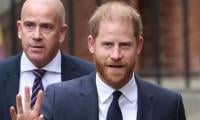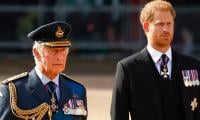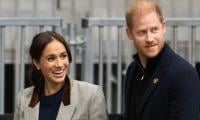Your right to know: What are public figures in private life
ISLAMABAD: A story in this newspaper late Monday about Imran Khan’s third marriage generated intense debate, mostly on the social media. It was about contradictory claims on the date his nikah was performed.
The News broke the story on January 6 that the PTI chairman had secretly tied the knot with the mother-of-five and his spiritual guide, on January 1. Imran not only issued a belated denial (48 hours after the publication), a complaint was also lodged against this correspondent, author of the story, with Pemra and the Press Council of Pakistan for this “malicious and baseless” report.
In addition, he performed another ceremony on February 18 and the pictures were subsequently released to give an impression as if nikah occurred on that date and not on January 1. The News assembled enough evidence to establish the second ceremony was just an eye-wash and that the marriage had already taken place as claimed by this newspaper. This formed the basis of the second story carried late Monday, still not denied.
We thought a political figure of Imran’s stature aspiring to become prime minister would be held answerable for false claims. And defamation suit will be filed against this newspaper in case our story of late Monday was wrong. Instead, a smear campaign was launched to condemn intrusion into the private life of a public figure. Lesser explained the better about the dirty tricks used by the PTI’s social media to hide lies.
The party’s social media brigade was encouraged further when the story came under criticism of noted anchors and analysts. Interestingly, none of them contested the information and rather attacked intention, questioned intrusion into privacy of a public figure and alleged me of an attempt to scandalise a woman only because she entered into marriage with a celebrity.
The daily Dawn also editorialised this. Where the editorial condemned smear campaign against this correspondent from PTI’s social media, it also brought under question merit of the story that, it said, was “less news and more scandal-mongering and which should not have seen the light of day.” Journalists must abide by the ethics of their profession, the editorial argued, that is what distinguishes real journalism from that of the jaundiced kind. This criticism merits answers.
First of all, the basic duty of a journalist is to dig out facts. Uncovering lies is not a crime; hiding them is. The fake news and false claims are unfortunately becoming a global norm posing a challenge for the media. Fact-checking sections are being formed by different media houses; mostly in the Europe and the North America.
Several non-profit organisations have been set up with the sole purpose of fact-checking. The PolitiFact, a Pulitzer-prize winning organisation in Washington DC that awarded US President Donald Trump “Lies of The Year” title in 2017 is one of them. Right now, there are around 150 such organisations; none in Pakistan where media is still practising “he said, she said” journalism.
Second, most-oft question one faces after a scandalous story is, say, that why you reported against Imran Khan, not against any other political figure. Whether the information is accurate or not should have been the question instead; hardly any critic talked about it. We appear to believe on the quota system as if one is duty-bound to collect similar details of other politicians, true or false, before reporting what is available. I did the story. The PTI should have taken me to the court. Onus of proving it is on me. I will do that.
Coming back to the story under question, the PTI chairman’s complaint against me is already pending with Pemra. Don’t have I right to prove that I was right? Depriving me through an argument that it was “less news and more scandal-mongering” is unfair. I can say with full certainty that no reporter, (I mean reporter, not anchors and analysts who are just into commentary business), would have dropped the story had he had as much authentic information which was available with me.
Considering there is no such litigation pending against me, shouldn’t we remind the readers that how lies are spoken by leaders and conveniently forgotten by public in presence of friendly media? If others are unwilling to do this job, this doesn’t bind us to follow them. Likewise, the display of a story is subjective judgment which varies from newspaper to newspaper and editor to editor. The scrutiny should focus on the veracity of facts, the key duty of any media house.
Nikah Khawan Mufti Saeed’s disclosure that he has been requested not to divulge real date of marriage before media may not be a news for Dawn, however, Imran Khan understands its implications who has recently been declared “Sadiq and Ameen” by the highest court of Pakistan.
Third, criticism of certain quarters is also grounded in the argument that a woman (the bride) has unnecessarily been scandalised. I have since been thinking how one could tell about the marriage without mentioning Imran’s wife. Getting married with him is her decision. Reporting about it is our right and more so because she carries enormous influence over Imran’s political decision-making as well. That Imran Khan told Jehangir Tareen that he did marriage with her in order to win elections is indicative of her impact on future prime minister’s decisions. Our challenge is to prove the authenticity of this account that we will happily do.
Fourth and last: that one must not intrude into the privacy of a public figure is another point of critics they focus the most when they run short of other arguments. The answer is simple. Public figures use the media for relaying their message for building their image and furthering their agenda in order to shape opinion. They happily share private details which may establish their benign image. However, they hate the publication of any detail denting their image while taking refuge behind the “privacy” argument.
We tend to forget the role of media. It is not only an instrument of broadcasting their message but it also has a role of a watchdog. Public at large doesn’t have means and ways to know about their role models beyond what they come to know through media. How far media can intrude into privacy is a contested point and limits have been set by different newspapers depending on their policy and the nature of public figures.
Tabloids are mainly celebrity-specific. Serious newspapers take decisions on the basis of celebrity the information is about. Donald Trump was caught in sex scandals during the US presidential elections. Numerous stories have been broken by The New York Times (considered bible by its readers), Washington Post (an equally prestigious paper) and the CNN. All three of them are referred to as the standard-bearers in journalism schools and the media industry but declared as “fake news” by Trump. Should they stop exposing him because certain sections consider that they have an “agenda” against Trump?
Another example is golfer Tiger Woods who was not a political figure but a revered sportsman presented as an ideal role model. This image turned out to be sham when stories into his private life revealed he was unfaithful to his wife and found involved into multiple affairs. People came to know this through media reporting into his turbulent private life. Letting public know it was important because he was treated as an icon, a status he used to generate money. In case of Imran Khan, he is vying for the top office like Trump and was an accomplished player-cum-role model like Tiger Woods.
-
 Why Ashton Kutcher Is Still Talking About Whether He Showers
Why Ashton Kutcher Is Still Talking About Whether He Showers -
 IMF’s World Economic Outlook: ‘Resilient’ 2026 Growth Expected Amid Tariffs & AI Boom
IMF’s World Economic Outlook: ‘Resilient’ 2026 Growth Expected Amid Tariffs & AI Boom -
 Find Out Early Subtle Signs That You Might Have Parkinson's Disease
Find Out Early Subtle Signs That You Might Have Parkinson's Disease -
 Prince Harry Appears In High Spirit, Greets Supporters At London High Court
Prince Harry Appears In High Spirit, Greets Supporters At London High Court -
 Kate Middleton, Prince William Left 'frustrated' For THIS Major Reason
Kate Middleton, Prince William Left 'frustrated' For THIS Major Reason -
 Robert Irwin Reveals Relationship Status After 'DWTS' Romance Rumors
Robert Irwin Reveals Relationship Status After 'DWTS' Romance Rumors -
 Relieve Eczema Symptoms This Winter With Simple Steps
Relieve Eczema Symptoms This Winter With Simple Steps -
 Prince Harry Faces Marital Tensions As King Charles Offers Olive Branch
Prince Harry Faces Marital Tensions As King Charles Offers Olive Branch -
 South Korea, Italy Strengthen Ties To Bolster AI Technology, Business, Defence Cooperation
South Korea, Italy Strengthen Ties To Bolster AI Technology, Business, Defence Cooperation -
 Elon Musk Shares Crucial Advice As China’s Birth Rate Hits Record Low Since 1949
Elon Musk Shares Crucial Advice As China’s Birth Rate Hits Record Low Since 1949 -
 Kelly Clarkson Finally Quitting Morning Show?
Kelly Clarkson Finally Quitting Morning Show? -
 'Confident' Prince Harry Breaks Silence After Returning To Britain
'Confident' Prince Harry Breaks Silence After Returning To Britain -
 James Gunn Reveals What Caused Wonder Woman Casting Rumors
James Gunn Reveals What Caused Wonder Woman Casting Rumors -
 Tesla Emerges Early Winner As Canada Welcomes Chinese EVs: Here’s Why
Tesla Emerges Early Winner As Canada Welcomes Chinese EVs: Here’s Why -
 New Hope For People With Obesity As Failed Drug Offers Cure
New Hope For People With Obesity As Failed Drug Offers Cure -
 Prince Harry Considering ‘half-in, Half-out’ Royal Role Amid UK Trip?
Prince Harry Considering ‘half-in, Half-out’ Royal Role Amid UK Trip?



